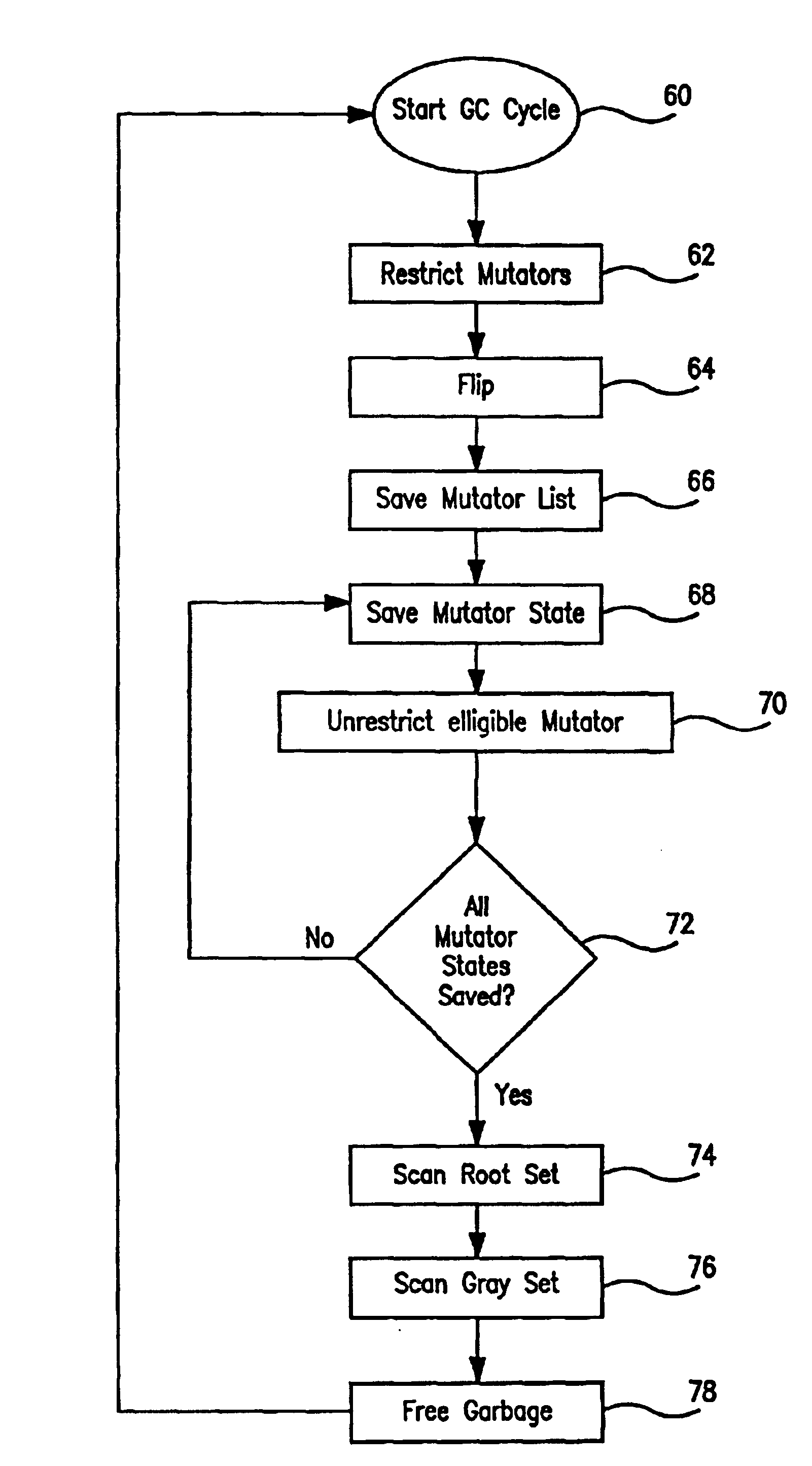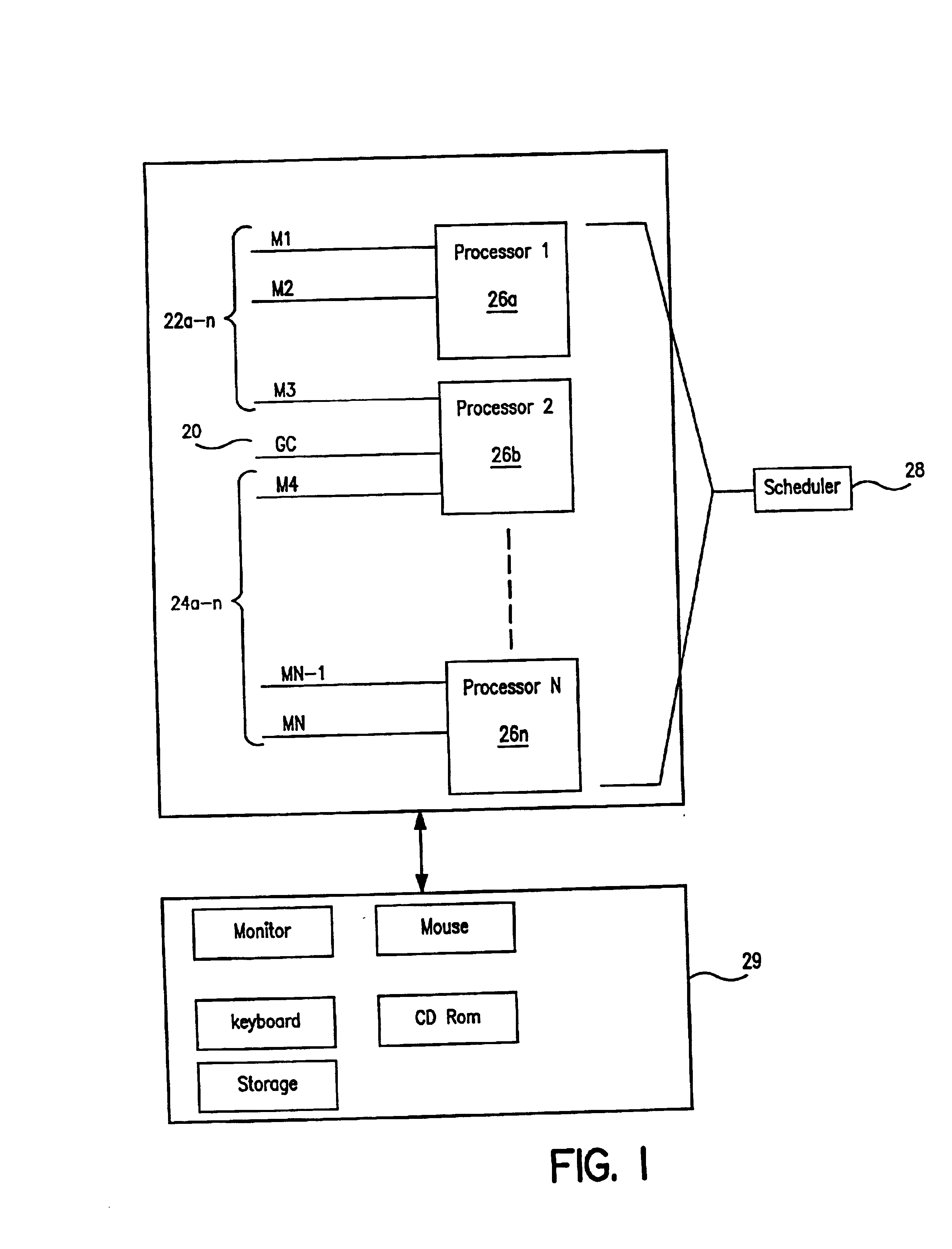Real-time computer "garbage collector"
a real-time computer and garbage collector technology, applied in the field of real-time computer garbage collectors, can solve the problems of inability to meet the needs of garbage collection, etc., and achieve the effect of valuing performance benefits
- Summary
- Abstract
- Description
- Claims
- Application Information
AI Technical Summary
Benefits of technology
Problems solved by technology
Method used
Image
Examples
Embodiment Construction
Basic Concepts and Definitions
FIG. 1 depicts a representative system that may be employed to embody the present invention. Garbage collection preferably takes place in its own execution thread 20 in real-time and concurrently with the execution of multiple mutator “threads”22a-n and 24a-n. All of these various threads are run on one or more processors 26a-n. Where, as in the typical case, there are more live threads than processors, Scheduler 28 manages processors 26a-n by allocating each processor's time and resources among the multiple live threads. Processors 26a-n preferably interact with standard input / output facilities 29.
Formally, a thread is an execution context within a shared address space. A thread's “state” is defined by an associated set of local data, such as a run-time stack and a set of registers, or the like. Multiple threads preferably access other data—e.g., global data and heap data—within a shared, common address space. For purposes of illustration, we will ofte...
PUM
 Login to View More
Login to View More Abstract
Description
Claims
Application Information
 Login to View More
Login to View More - R&D
- Intellectual Property
- Life Sciences
- Materials
- Tech Scout
- Unparalleled Data Quality
- Higher Quality Content
- 60% Fewer Hallucinations
Browse by: Latest US Patents, China's latest patents, Technical Efficacy Thesaurus, Application Domain, Technology Topic, Popular Technical Reports.
© 2025 PatSnap. All rights reserved.Legal|Privacy policy|Modern Slavery Act Transparency Statement|Sitemap|About US| Contact US: help@patsnap.com



